Getting Started with Baylie
Do you need help installing or updating Baylie?
If you’d like to start with some example content, here’s the content from the demo. Download and unzip the file. Then use the Tools → Import tool in your WordPress admin. Need step by step directions?
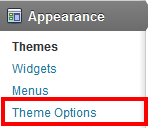 In your WordPress admin, click on the “Theme Options” button located under the “Appearance” tab in the left menu. Here you can configure a number of options to tailor the theme to fit your needs.
In your WordPress admin, click on the “Theme Options” button located under the “Appearance” tab in the left menu. Here you can configure a number of options to tailor the theme to fit your needs.
General
Logo: Upload your own personal logo. If no logo is uploaded, your website’s name will be displayed in
plain text.
Favicon: Add your own favicon.
Custom CSS: Add your own custom styles.
Appearance
Set header, accent, button and link colors.
Home Page
Here you can control control various aspects of the home page, including how many projects, posts, featured pages, and testimonials are displayed.
Typography
Fonts: Specify fonts from Google’s Web Font Directory for headings, body text, and home message. Be sure to type the font name exactly as it is listed on their site (the font is case-sensitive).
Slideshow
Here you can control the speed and animation of all slideshows created with the slideshow shortcode.
Posts
Here you can set what info is shown with your posts, and choose from large or small featured image size. You can also choose to show full blog posts instead of excerpts on archive and index pages. And set your blog to be full width with no sidebar.
Footer
Footer Text: Edit the footer text. Add your own copyright info, links, etc.
In your WordPress admin, click on “Menus”, which is located uner the “Appearance” tab on the left. Start by creaing a new menu in the panel on the right. Once the new menu is created you can add pages, categories, and custom links from the panels on the left. You can then re-order and create submenus by dragging the menu items. When you’re finished, click the “Save Menu” button.
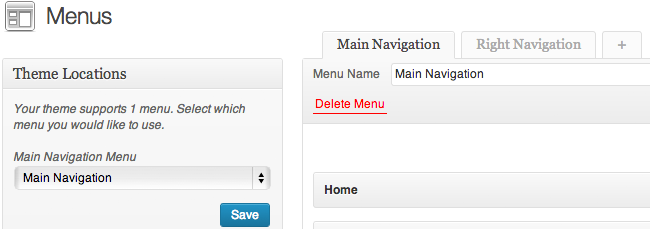
This theme has several custom widgets and a number of widgetized areas in which you can use them. To add widgets, click on “Widgets” under the “Appearance” tab in your WordPress admin. Click and drag a widget to one of the boxes on the right. Then set your options for that widget.
Custom Widgets
Baylie Recent Posts: Display a list of recent posts from a certain category or all categories, with the option to display an excerpt from the most recent post.
Baylie Testimonials: Display a random testimonial.
Baylie Flickr: Show thumbnails for a Flickr account. Please note the Flickr widget uses your ID not your username. If you don’t know it, this will help: http://idgettr.com/
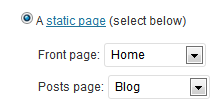 By default, this theme will display your latest posts on the front page. To activate the home page as seen in the demo, first create a new page and name it something like “Home”. As you’re creating this page, select the “Home” page template in the Page Attributes box found in the right column. After you publish your page, go to Settings → Reading. For “Front page displays”, choose a static page and select your newly created “Home” page. Then save your settings.
By default, this theme will display your latest posts on the front page. To activate the home page as seen in the demo, first create a new page and name it something like “Home”. As you’re creating this page, select the “Home” page template in the Page Attributes box found in the right column. After you publish your page, go to Settings → Reading. For “Front page displays”, choose a static page and select your newly created “Home” page. Then save your settings.
The home page template is set up to display a full screen slideshow, recent projects, featured pages, testimonials, and static content.
Home Page Slideshow
This theme has a slideshow that you can display on the home page. You can enable and disable it in Appearance → Theme Options under the Home Page tab.
 You can add and manage slides under the “Slides” tab in the main WordPress admin menu. A slide will display what content you add to the editor and the background image that you set in the Slide Options box. The recommended image size for the slide background image is: 1700px x 1100px. These are not exact image size requirements, so feel free to experiment with different dimensions.
You can add and manage slides under the “Slides” tab in the main WordPress admin menu. A slide will display what content you add to the editor and the background image that you set in the Slide Options box. The recommended image size for the slide background image is: 1700px x 1100px. These are not exact image size requirements, so feel free to experiment with different dimensions.
Recent Projects
By default this will display your recent projects that you create under Projects->Add New. However you can choose to only show projects that you mark as “featured”. You can change this setting in your theme options under the Home Page tab.
Featured Pages (Our Services)
This section displays pages that you choose to feature on the home page. For each page, the featured image, title, and excerpt will be displayed. You can choose how many to display under the Home Page tab in your theme options.
Testimonials
Displays testimonials that you created under Testimonials->Add New. You can choose how many to display under the Home Page tab in your theme options. Testimonials are composed of a background image, featured image, title(the person’s name), and the content. The background image is used on the home page, and the featured image is used in the Testimonials widget.
Static Content
This section will display what ever you add to the content editor of your home page.
 If you’ve followed the steps above to set up your home page, you’ll probably want to display your posts on a different page. You can easily do this by creating a new page and giving it a name like “Blog”, “News”, or whatever you’d like to call it. After you publish your page, go to Settings → Reading. For “Front page displays”, choose your newly created “Blog” page for Posts page. Save your settings.
If you’ve followed the steps above to set up your home page, you’ll probably want to display your posts on a different page. You can easily do this by creating a new page and giving it a name like “Blog”, “News”, or whatever you’d like to call it. After you publish your page, go to Settings → Reading. For “Front page displays”, choose your newly created “Blog” page for Posts page. Save your settings.
Then in your theme options under the Blog tab, choose your blog page, and save.
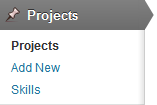 This theme uses a custom post type called “Projects” to help you manage your portfolio. To set up your portfolio page, create a new page and select the “Portfolio” page template. To add a new portfolio piece, select “Add New” under “Projects” in the left hand menu. Use the main text editor on the Project edit page to insert the main images or video for your project. Ideal image width is 990px, but if your images are larger they will be sized with the fluid layout.
This theme uses a custom post type called “Projects” to help you manage your portfolio. To set up your portfolio page, create a new page and select the “Portfolio” page template. To add a new portfolio piece, select “Add New” under “Projects” in the left hand menu. Use the main text editor on the Project edit page to insert the main images or video for your project. Ideal image width is 990px, but if your images are larger they will be sized with the fluid layout.
Skills
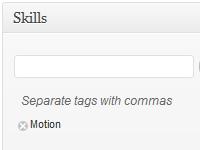 When creating a project, it’s important to assign it to a skill. Skills are categories for your projects and they are used to form the project filter navigation. You can find the “Skills” box in the right column.
When creating a project, it’s important to assign it to a skill. Skills are categories for your projects and they are used to form the project filter navigation. You can find the “Skills” box in the right column.
Project Options
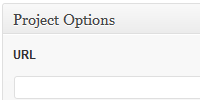 Here you can set a project to be featured on the home page.
Here you can set a project to be featured on the home page.
Thumbnail Image
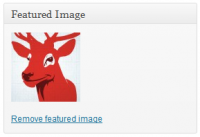 To create the thumbnail for your project, use the “Featured Image” box found at the bottom of the right column. Use the popup window to upload an image, and then click “Use as featured image”. The image that you upload should be at least 300px by 250px.
To create the thumbnail for your project, use the “Featured Image” box found at the bottom of the right column. Use the popup window to upload an image, and then click “Use as featured image”. The image that you upload should be at least 300px by 250px.
This theme comes with a special slideshow built-in that scales with the fluid layout which is all part of the responsive design. All you have to do to turn a set of images in your content into a slideshow is wrap them in this shortcode:
[ssc][slideshow][/slideshow][/ssc]
See the example below:
[ssc][slideshow] <img src="http://domain/imageurl-1.jpg" /> <img src="http://domain/imageurl-2.jpg" /> [/slideshow][/ssc]
It’s important to note that images in a slideshow can not be linked.
This theme comes with column shortcodes, which allows you to easily create columns within your content. You can create columns that are one third, two thirds, or one half of the content area’s width. Here’s an example. Notice the additon of “_last” to the name of the last column’s shorcode. This is important.
[ssc][one_third] ...your content here [/one_third] [one_third] ...your content here [/one_third] [one_third_last] ...your content here [/one_third_last][/ssc]
Here are the available column shortcodes: one_third, two_third, one_half. Use these in the format demonstrated above.
You can add beautiful buttons to the content of any page, post, or widget using the following shortcode:
[ssc][button label="Launch Project" url="http://themetrust.com/hardy" color="#f05134" target="_blank" ptag=true][/ssc]
The button shortcode takes 5 parameters: url, target, label, ptag, and color.
Translating Your Theme with WPML
Basic Setup
Baylie is WPML-compatible, meaning that all text in this theme can be translated to the language of your choice. To begin, be sure you have the WPML Plugin installed and activated, along with the WPML String Translation plugin.
To set up WPML the first time, follow their Getting Started Guide.To begin translating, select WPML (in the Dashboard menu) -> String Translation. You should see a list of the strings in the theme (there should be only four), with blue translation links to the right. Click these links to reveal the list of languages you use on your blog and the associated translations.
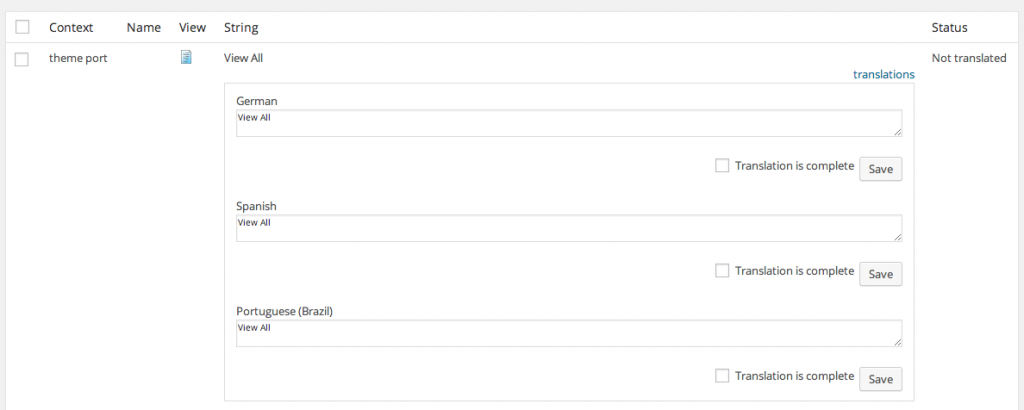
Translating Projects, Skills, Slides and Testimonials
To translate the custom post types and taxonomies (projects, skills, slides and testimonials), go to WPML -> Translation Management. After, select Multilingual Content Management from the tabs.
Next, locate the section called Custom Posts (about halfway down). Here you can choose the translations for projects, testimonials and slides (and their slugs). Below this section, you can see Custom Taxonomies, where you can translate the skills taxonomy.


